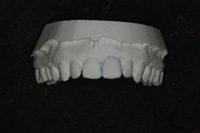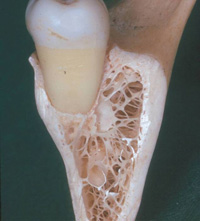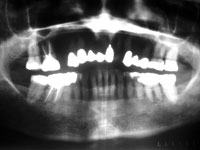Twelve years ago, I returned from Peter Dawson’s “Top Ten Percent” course, a valuable survey of the current trends in restorative dentistry and practice management. While the need for staff meetings was on his “very important stuff” list, it wasn’t at the top. But the need for staff meetings did resonate for me, since like so many of my colleagues, I could never get my hands comfortably around management and leadership issues. It always seemed as if one staff member or another was out of synch with the office and often out of synch with me. Maybe, I thought, if I embraced staff meetings in a regular and committed way, things would change. So I did. I took to heart the concept of staff meetings and initiated this practice. Now we have 2 a week—every Tuesday and Thursday from 2 to 3 pm without fail. This led to an extraordinary change in our dental office, both in terms of performance and culture.
Culture might seem like an odd word in this context, but I think it appropriately describes both what is done in our practices and, perhaps more importantly, how and why it is done. Our office culture insists on an unusual level of intimacy; we have a “shared vision” in language that is commonplace in organizational business literature. Patients must never get the feeling that staff is “on the clock,” or that anyone in the office has a “not my job” mentality. This culture places tremendous responsibility on the leader, for it is that person who conveys an authenticity to the staff and allows this level of intimacy to flourish.
In the series of articles to follow, “The Eleven Essentials of Effective Staff Meetings,” we will explore the components of our staff meeting process. The Essentials grew out of a conversation that occurred over many weeks in response to a colleague looking for some guidance in this area of her practice. “Our staff meetings are pretty disorganized,” she told me, “and often turn into gripe sessions over which I lose control. I’m close to forgetting about them altogether, and I know that would be a mistake. Can you help?” I brought this request up to our staff, and we started to put on paper what we were actually doing at our staff meetings. What follows is our process. As we began to clarify the reasons why we did certain things, we deepened our understanding of our own behavior. This process of reflection continues with each meeting.
Please do not take our Essentials to be the gospel. Each of us and our practices are unique and rest, to a significant extent, on the skills and inclinations of the leaders and their willingness to expose their frailties and learn from them. Most important is the creation of a safe and supportive context in which we can explore our less-than-perfect selves. I think a key concept in this is that of transparency. An open and transparent culture is nourishing for the practice and for the people in it. Our Essentials are not a cookbook. Far more important than doing things by rote is the ability of the “chef” and staff to be flexible and to improvise depending on raw ingredients and circumstances. I hope to provide the rationale and methodology, and maybe, more importantly, the passion, so that the reader’s own unique process can take place.
EFFECTIVENESS LANGUAGE
Some additional comments about effectiveness language are in order. This language comes from Stephen Covey’s The 7 Habits of Highly Effective People (and I’ll bet he wasn’t the first person to use it). While it appeals to our desire for good outcomes, the language is a tad mechanical. When we say “if you do a, b, and c, then you will wind up with d, e, and f,” we assume that humans operate like mathematical theorems and that outcomes are predictable. We are neither as simple nor as logical as all of that. We are not machines, and the Essentials, helpful as we hope they will be, are but a pathway to outcomes far beyond effectiveness. Initially, there will be increased competency, but in the long term, they will speak to the deeper issues of purpose and fulfillment, issues beyond the immediate goals of staff meetings but not beyond who we are as human beings.
At the onset, I want to disclaim any unique credential in the employee relations or team-building area, save that I am incredibly loyal to commitments I make and that I do not permit setbacks to derail me. For example, it took me 5 years—that’s right, 5 years—to dismiss a key employee after I had determined that her continued employment was detrimental to our office. The onset of our staff meeting culture had a lot to do with my ability to summon up the courage to make the decision. As Aristotle said, “Courage is the first virtue, without it nothing else is possible.” It is a valuable quote to remember. Now I have exposed the fact that I am not a fast learner, and you don’t have to be one either. All you have to be is a learner.
Another personality trait that is important for the leader in this staff meeting culture is persistence. In the course of leading my dental practice, I have made many errors, some repeatedly. And while I strive to be perfect, I suspect perfection is out of my reach.The willingness to place many of my mistakes under a learning microscope is what really matters. I offer them as fuel for the learning process.
THE BUSINESS OF RELATIONSHIPS
Staff meetings are hot. They are usually slotted in the “practice management” section on CE programs, and along with cosmetic dentistry are the most sought after and best-attended courses. All of the management gurus are talking about their importance, and audiotapes and videotapes are aggressively marketed in support of this tool. Jennifer de St. George has published 24 Reasons to Have Staff Meetings. That seems like the right number. I could go on and on, but the point is made. Staff meetings are properly considered an indispensable part of a successful dental practice.
But staff meetings, as I’ve said, are not a “turnkey” tool. As is the case with so many things that we have to learn, the process of learning is what actually has to be learned. This perspective is different than that of other practice management people, and while I offer these “Eleven Essentials of Effective Staff Meetings,” I believe that, housekeeping issues aside, their fundamental purpose is to teach us how to do relationships. You might think this language a bit informal, but it rests on the well-known and universally accepted perspective that service businesses are first and foremost businesses of relationships. Our staff meetings are the tool that we use to work on relationships—relationships with each other and with patients. In a sense, these meetings are reflecting ponds. They allow us to assess and see how well we are doing in this absolutely crucial area of practice.
If, as the leader of the practice, you think this relationship stuff is frivolous, especially the part about interstaff relationships, I refer you to The Service-Profit Chain by James Heskitt, et al. This valuable book describes research done at Harvard, which quantifies the relationship between employee and customer satisfaction and how both of these factors directly lead to changes in the so-called bottom line. Lots of companies know this and strive to be on the list of “Best Companies to Work For.” I hope that when you finish my staff meeting series in Dentistry Today, your practice will be on the “Best Dental Practice to Work For” list.
My investment in staff meetings is substantial. Measured in terms of production time and staff salaries, it is well over $100,000 per year. I am convinced there is good value here. We have experienced substantial growth each year, and there is virtually no staff turnover. These are very good things, and they contribute to a level of calm and degree of satisfaction in our day-to-day operation. I believe our staff meetings are really what set us apart. But to be quite frank, if revenue growth is your sole concern, I’d suggest some other, less demanding activity. Hopefully, as our staff meeting story unfolds, you will be able to see how the rewards (including, but not exclusively, financial), far outweigh the effort.
I stressed my financial commitment earlier because our profession is primarily left-brain, bottom-line oriented, but the right brain plays an important role as well. This other dimension of value, the right-brain dominant one, may well be more significant than the linear and one-dimensional return-on-investment measure. Staff meetings create an ongoing context for growth and development for the entire staff, which in turn cannot help but make your dental practice a more vibrant, exciting, and satisfying work environment, one that supports enhanced self-esteem for all staff members. Self-esteem comprises confidence in our decision-making and belief in our right to be happy, and as we create this learning environment, this learning organization if you will, we support the most fundamental of human needs. This powerful and positive environment is experienced by the doctor, staff, and patients. People feel it.
But whether or not we stress one part of the brain over the other, the point is that we are fundamentally service organizations. Staff meetings address a core need of this business: the need to nurture and expand our ability to create value-added relationships. If we accept, as I maintain we must, that the relationships that our staff has with patients is at the core of our growth, then the relationships that we have with each other are the model that we must teach. Staff meetings function to support, in practice, what these relationships must be. I see this work as the very foundation of a successful, happy, healing, and helpful dental practice.
The next article of this series will explore, in detail, “The Eleven Essentials of a Staff Meeting-Centered Dental Practice.”
Dr. Goldstein is a 1968 graduate of the University of Pennsylvania School of Dental Medicine. He is the president-elect of the Academy of Laser Dentistry as well as a Certified Professional Coach. He received his certification credential from New Ventures West, after taking their 1-year professional coaching course. Dr. Goldstein is a fellow in the American College of Dentists, serves on the Dental Advisory Board of Dentistry Today, and the British publication Independent Dentistry. He is also a member of the Association for Contemporary Dental Education. Dr. Goldstein maintains both a general practice dental practice as well a coaching practice in New York City and can be reached by e-mail at llaama1@mindspring.com, or visit his Web site coachingpractice.com.










